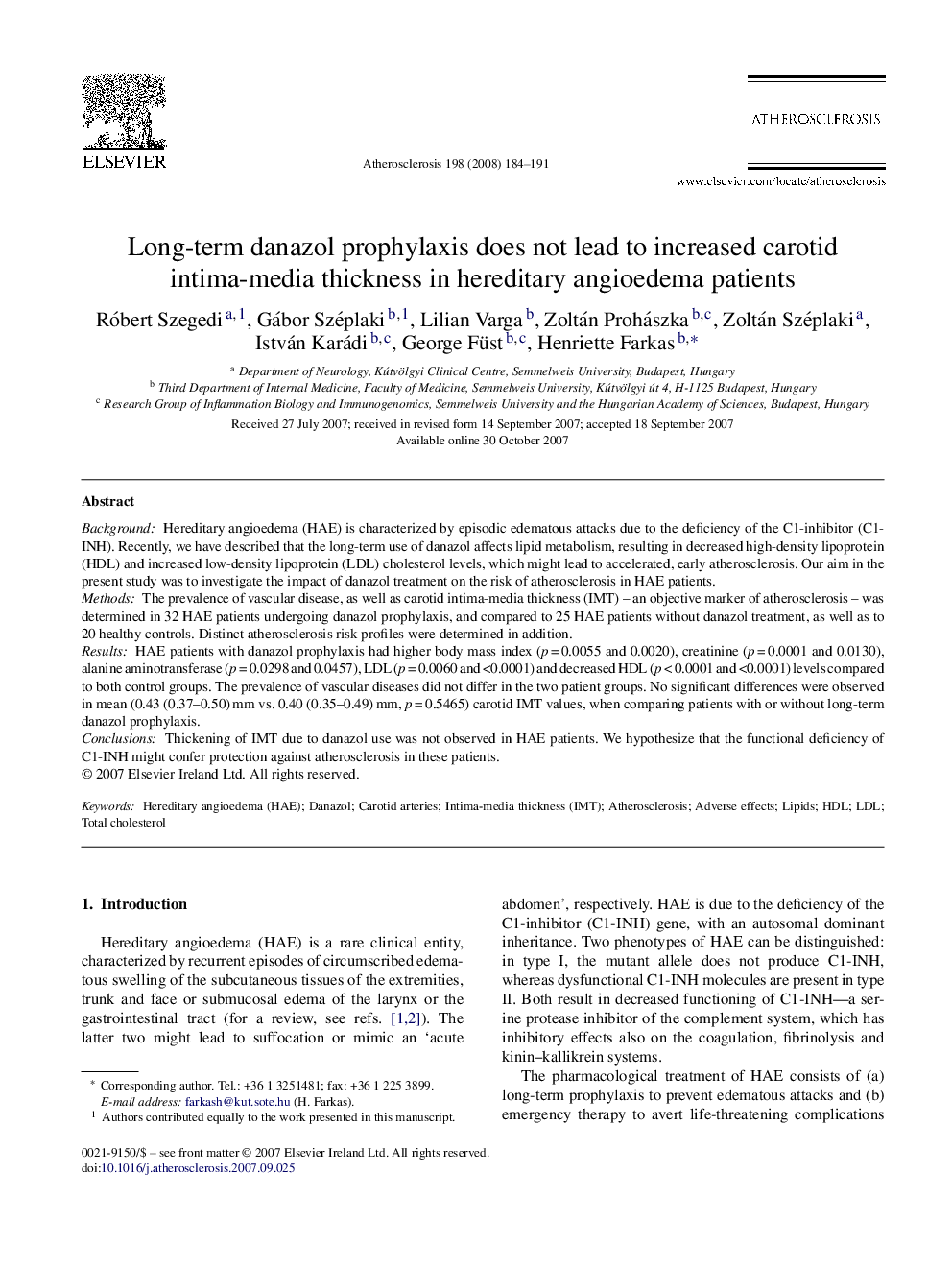| Article ID | Journal | Published Year | Pages | File Type |
|---|---|---|---|---|
| 2894620 | Atherosclerosis | 2008 | 8 Pages |
BackgroundHereditary angioedema (HAE) is characterized by episodic edematous attacks due to the deficiency of the C1-inhibitor (C1-INH). Recently, we have described that the long-term use of danazol affects lipid metabolism, resulting in decreased high-density lipoprotein (HDL) and increased low-density lipoprotein (LDL) cholesterol levels, which might lead to accelerated, early atherosclerosis. Our aim in the present study was to investigate the impact of danazol treatment on the risk of atherosclerosis in HAE patients.MethodsThe prevalence of vascular disease, as well as carotid intima-media thickness (IMT) – an objective marker of atherosclerosis – was determined in 32 HAE patients undergoing danazol prophylaxis, and compared to 25 HAE patients without danazol treatment, as well as to 20 healthy controls. Distinct atherosclerosis risk profiles were determined in addition.ResultsHAE patients with danazol prophylaxis had higher body mass index (p = 0.0055 and 0.0020), creatinine (p = 0.0001 and 0.0130), alanine aminotransferase (p = 0.0298 and 0.0457), LDL (p = 0.0060 and <0.0001) and decreased HDL (p < 0.0001 and <0.0001) levels compared to both control groups. The prevalence of vascular diseases did not differ in the two patient groups. No significant differences were observed in mean (0.43 (0.37–0.50) mm vs. 0.40 (0.35–0.49) mm, p = 0.5465) carotid IMT values, when comparing patients with or without long-term danazol prophylaxis.ConclusionsThickening of IMT due to danazol use was not observed in HAE patients. We hypothesize that the functional deficiency of C1-INH might confer protection against atherosclerosis in these patients.
